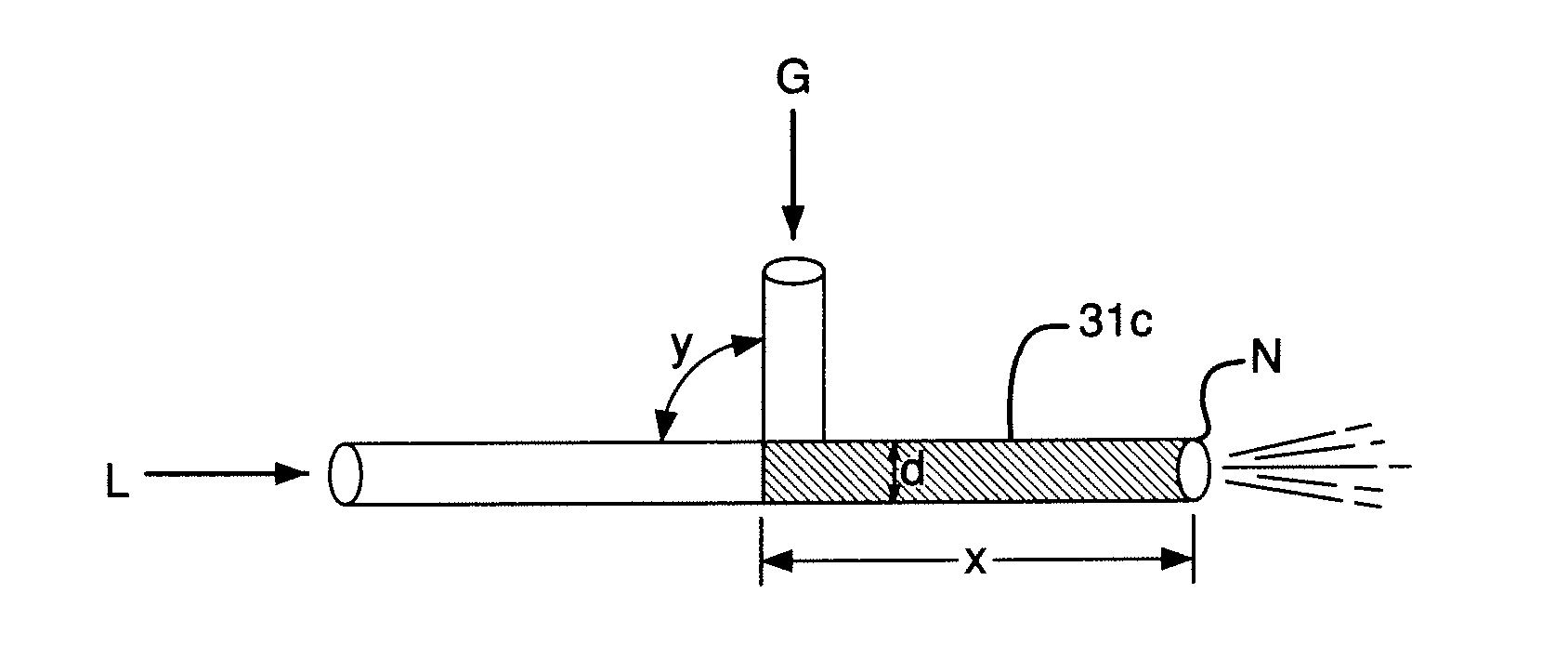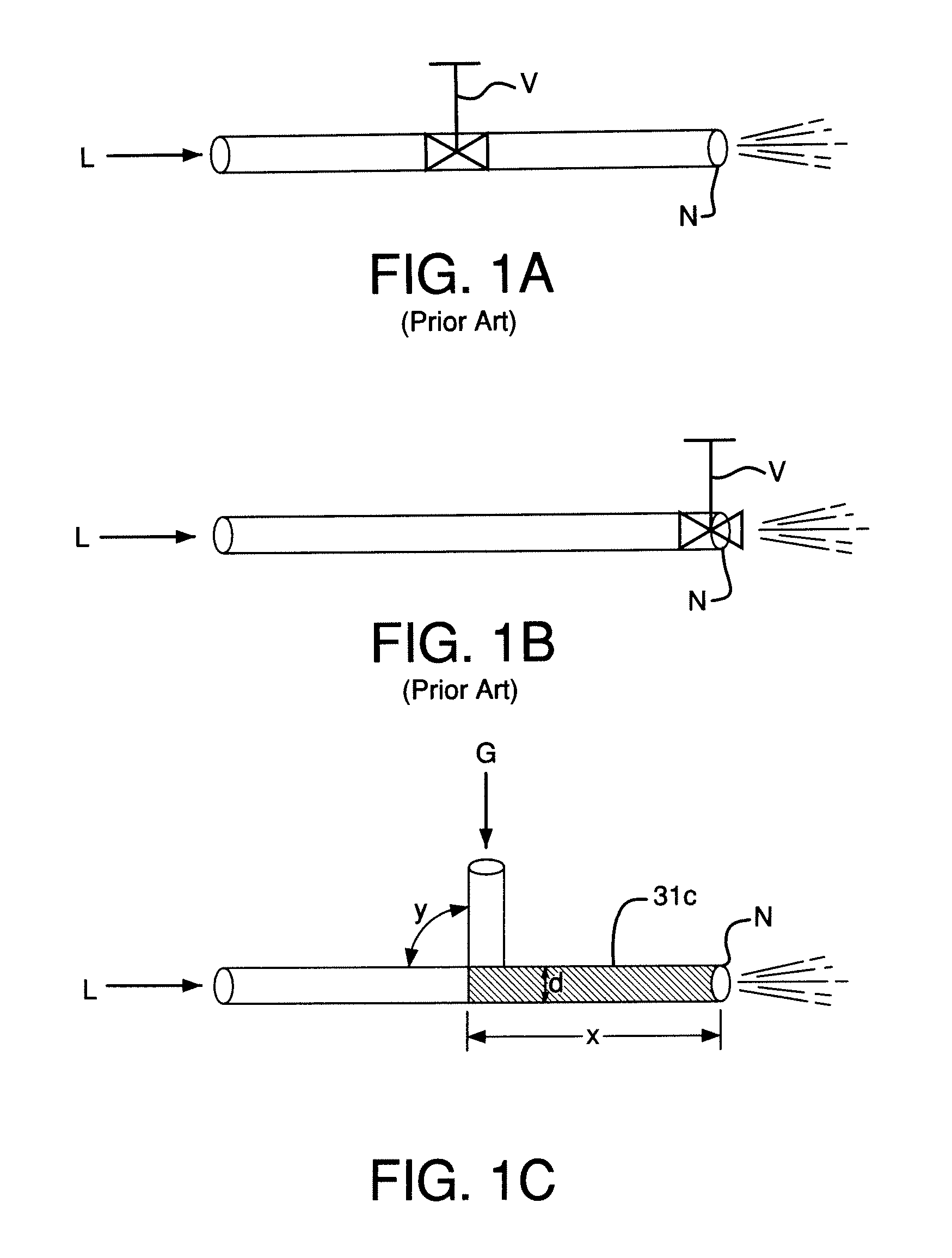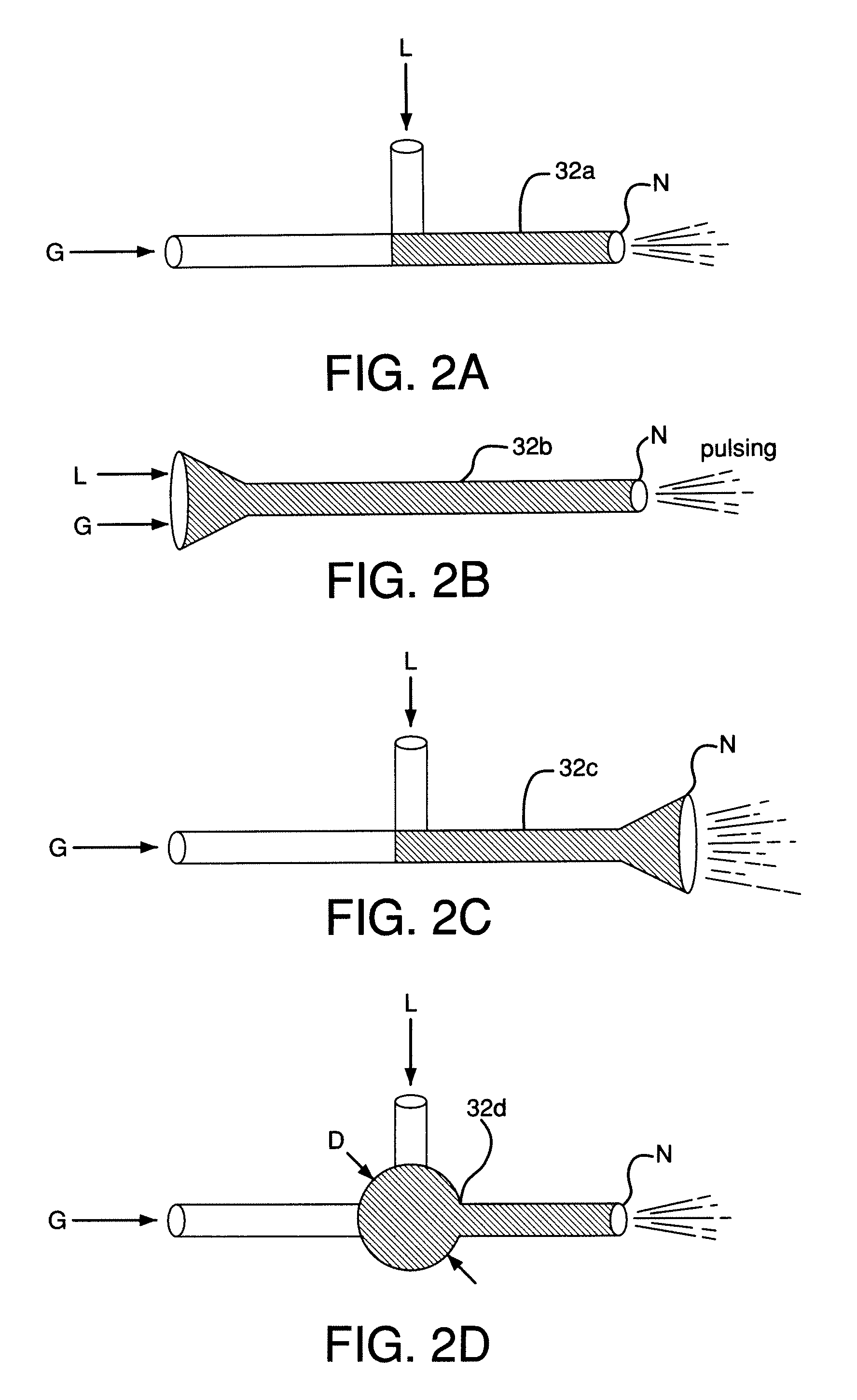Cryogenic Nozzle
a cryogenic nozzle and nozzle technology, applied in the direction of combustion types, heat treatment apparatus, container discharging methods, etc., can solve the problems of reduced spray velocity, flow rate pulsation, and increased boil-off,
- Summary
- Abstract
- Description
- Claims
- Application Information
AI Technical Summary
Benefits of technology
Problems solved by technology
Method used
Image
Examples
Embodiment Construction
[0030]As used herein and in the claims, the following terms shall be defined as follows:
[0031](i) A “cryogenic fluid” means a fluid having a boiling point less than −73° C. at 1 atm pressure.
[0032](ii) A “cryogenic liquid” means a cryogenic fluid in liquid phase a boiling point less than −73° C. at 1 atm pressure.
[0033](iii) A “nozzle” shall mean one or more openings for discharging a fluid. A nozzle is a constriction of the fluid line at or near the exit or termination point from which that fluid is ejected into open space that is at a lower pressure than the pressure in the supply line.
[0034](iv) “Head-on” flow communication between a conduit and a nozzle shall mean the flow path at the discharge end of the conduit merges into the flow path through the nozzle without a change in direction. Similarly, “head-on” flow communication between a fluid and a conduit shall mean the flow path of the fluid merges into the flow path at the feed or upstream end of the conduit without a change ...
PUM
| Property | Measurement | Unit |
|---|---|---|
| pressure | aaaaa | aaaaa |
| angle | aaaaa | aaaaa |
| angle | aaaaa | aaaaa |
Abstract
Description
Claims
Application Information
 Login to View More
Login to View More - R&D
- Intellectual Property
- Life Sciences
- Materials
- Tech Scout
- Unparalleled Data Quality
- Higher Quality Content
- 60% Fewer Hallucinations
Browse by: Latest US Patents, China's latest patents, Technical Efficacy Thesaurus, Application Domain, Technology Topic, Popular Technical Reports.
© 2025 PatSnap. All rights reserved.Legal|Privacy policy|Modern Slavery Act Transparency Statement|Sitemap|About US| Contact US: help@patsnap.com



